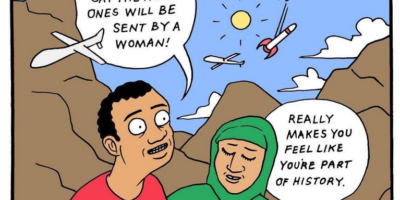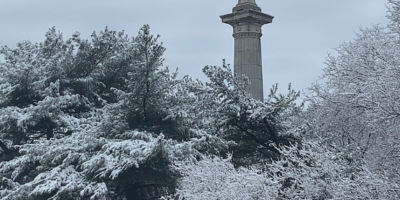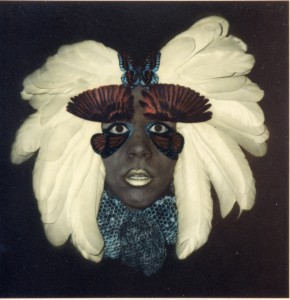New documentary nears completion with the help of Kickstarter
By Lucy Jones
Anyone who followed Institute 193’s successful financing campaign for Guy Mendes’ gorgeous new book 40/40: Forty Years, Forty Portraits knows the power of Kickstarter. Thanks to contributions raised on the nearly two year old website, Institute 193 was able to publish the book, individual financiers were able to count themselves as an important part of the process whilst simultaneously reaping tangible rewards, and the community as a whole benefitted from a project that documents some of the most interesting people and moments in Kentucky’s recent history.
Another project of local interest promises to do the same. Filmmaker Jean Donohue has been working on the documentary film The Last of the Pagan Babies since 2006. The film, which chronicles the rich cultural legacy of Lexington’s gay underground, is in the final stretch of completion. In an effort to cover the costs of final filming and post-production, Donohue has turned to the increasingly effective site. As she explains, “Fundraising is always the drag. Filmmaking is 90% fundraising, and grants for this project have not materialized. We’ve gotten this far with funds from a fundraiser we had three summers ago. The Kickstarter campaign has been a real shot in the arm.”
Donohue conceived the project in 2006 following a chance reunion with artist Robert Morgan. While reminiscing about the vibrant arts and cultural scene that existed in Lexington in the 1970s and early 1980s, much of which had been buoyed by the gay community, the two realized that many of the key players of that period had since passed away or otherwise disappeared. Donohue decided that there was a story to be told, and felt a sense of urgency to tell that story now.
The name of the film refers to an arts collective that emerged during that time and ultimately came to be known as the Pagan Babies. Morgan, one of the group’s pioneers, describes the Pagan Babies as “a loose confederation of young, wild gay kids and artists who dressed in drag and performed guerrilla street theater.” Their look and demeanor was met with stern disapproval by the comparatively staid members of Lexington’s Old Guard gay community. “All the drag queens absolutely hated it,” says Morgan. “Here we were—shirtless.”
The aims of the Pagan Babies, however, went far beyond aesthetics. “A lot of us were political young gay kids. We emulated what we saw in the underground press,” explains Morgan. Their sphere of influence widened as people made the move from Kentucky to urban centers like New York City and San Francisco but kept their local ethos intact. “Lexington had a direct link to a lot of scenes in art, theater, and politics during that time.”
The exploits of the Pagan Babies were documented by photographer John Ashley in a series of shoots which featured Morgan and other Lexington luminaries such as Bradley Picklesimer. Photos were compiled for a book with an introduction by Tennessee Williams, but the book was never published.
Donohue’s goal in making the film is “to tell a unique story about Southern history and its intersection with gay culture and underground art. Having lived in Boston for several years, and Cincinnati for that matter, when I described what my own coming of age in Lexington was like they couldn’t believe it. Some in the Northeast don’t believe there could be a rich counterculture of art, music, sexual camp, drag, and gay life. So, in a way, my goal is to share the local underground mythos and…counter perceptions that gay culture didn’t exist in Kentucky or the South.”
The film strives not only to document the Pagan Babies and their influence on arts in Lexington, but to explore what came before them. Morgan cites Lexington’s legendary Sweet Evening Breeze as an example of the intergenerational links that have informed the town’s identity. Born in the late 1800s, “Miss Sweets” lived until 1983 and spent most of that time living openly as a cross dresser. “She was the transvestite mascot of Lexington in the 1920s, 1930s, and 1940s.” Morgan recalls sitting with an elderly Sweets at Brezing’s Bar watching a young first time punk band perform. “She was part of this odd, unusual continuum of sexual outlaws who made contact with the next generation.”
Donohue hopes to maintain this cultural continuum by documenting it. To help her achieve her goal, please visit kickstarter.com and search for “The Last of the Pagan Babies.”




Walter Johnson
Hello John, how the hell are you? I’m still awake and above the grass, been in REHAB for some time now, but hope to return to my home very soon. Making plans to start once again making Daguerreotypes, [a first love of mine], for now my Sony Mavica cameras will do, the FD7/1997 is the one I find most interesting at .03mp, by pressing one button I have four different photo effects, gotta love it. Been active pulling up old folders, and I found yours, smiled thinking of you and those wonderful images of the baby, and had to try to contact you, I can be reached at 321-338-5908, or 2355 Vidina Dr., Viera, Fl. 32940.My very best to you, hoping that your health is fine, and your smile wide…..Walter Johnson
Jon Gale
I graduated from U of K in 1967. I was a member of the Sigma Nu fraternity which was well known for pushing the limits. Henry Faulkner used to frequent our parties. I am 6′ 5″ and was a brother of Pat Riley. Henry loved his athletes and the “big boys”. I was invited to several of Henry’s parties…Authur Murry Dance Studio. I well remember Henry’s Goat, Alice and feeding her Maker’s Mark at a frat. party. Henry also had a white rabbit that he carried on a yellow satin pillow and pranced through the football stands yelling “Come fellows”. “Sweets” was also invited to some of the parties…..he did not stay long……I remember him admonishing us…”What would your Mamas say if they could see you now. Many memories of Henry….he “fixed me and others up with an older woman “Aunt Sandy”. Meeting Sandy, I was invited to Henry’s house and got to see his paintings. I remember dancing with my girl friend at a S N party and Henry came up to us and tapped her on the shoulder, she went to dance with him, he said “no” its him I want to dance with….we danced for a minute to the cheers of the brotherhood. I could go on. Jon
Jon Coleman
Dear Mr. Gale,
I’m very interested in histories of Henry and Sweets. If you see this, could you please get in touch? Feel free to email me at jonathan.coleman@uky.edu Thanks!
Jon Coleman